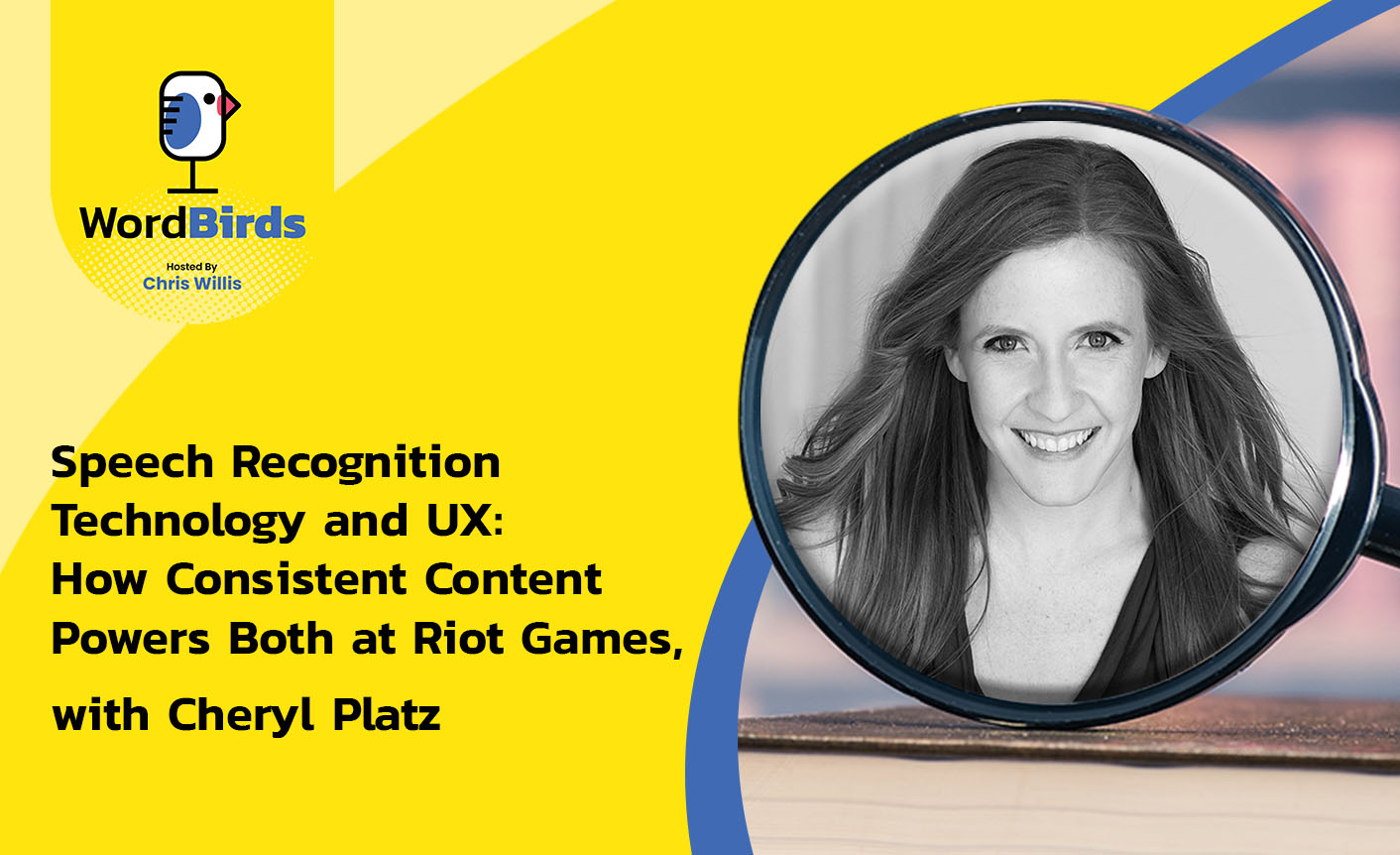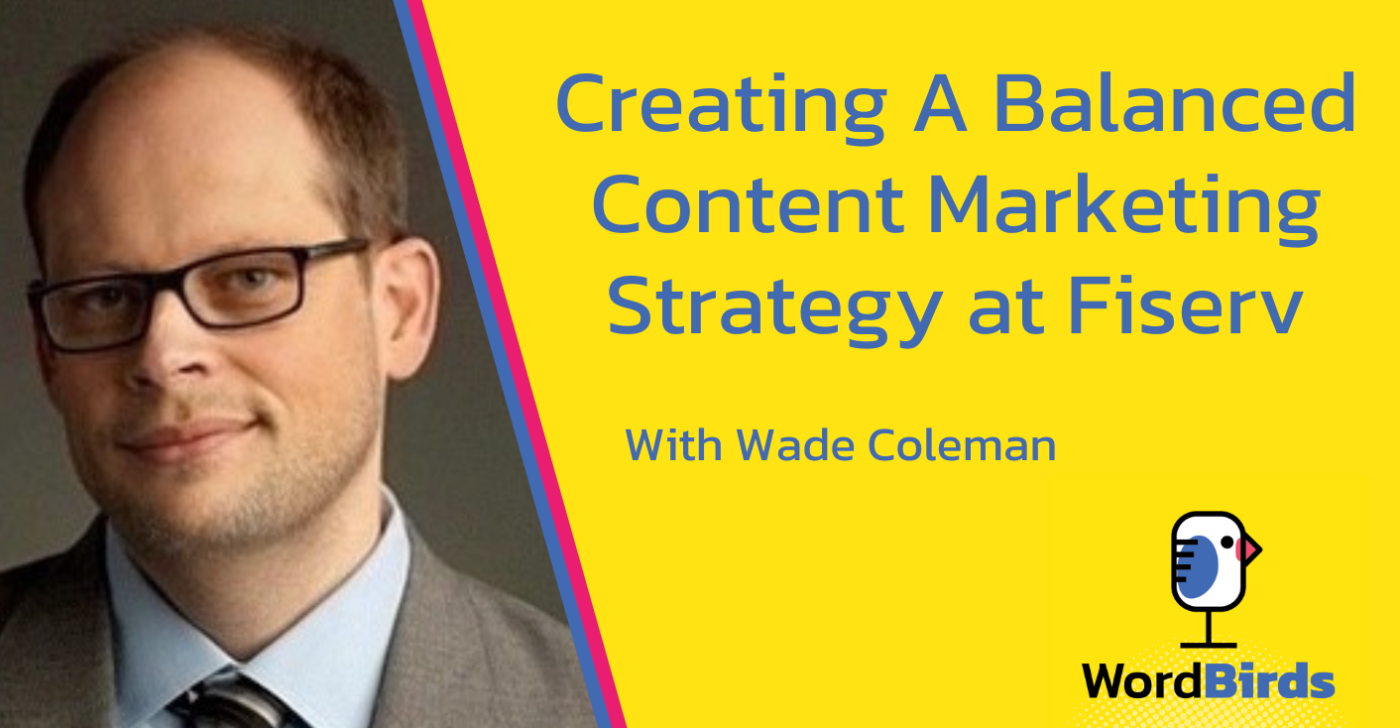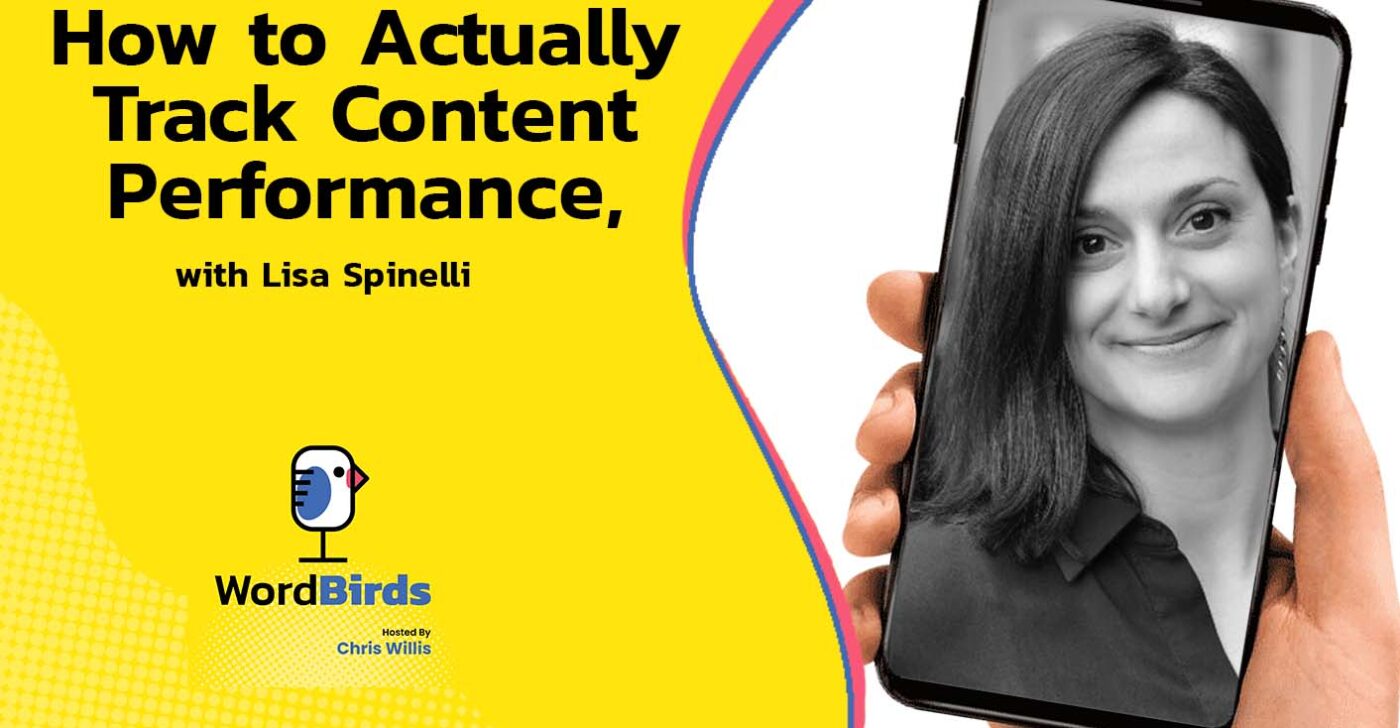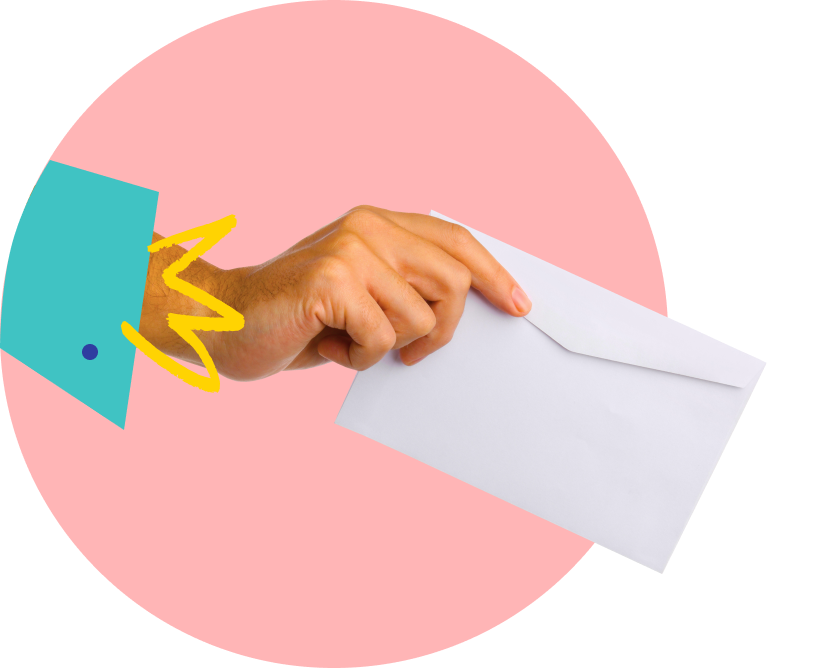Games like Disney Friends are changing how people communicate and relate to video game characters. You can now tell Disney favorites like Stitch that you love him. Today’s guest helped develop Disney Friends and is the Director of User Experience at Riot Games.
Join Cheryl Platz as she discusses speech recognition technology in the video game industry. Cheryl also talks about what it’s like to work in Riot Games and how everything has to be consistent now that they have more games. You can also learn about these latest game techs from her book, Design Beyond Devices: Creating Multimodal, Cross-Device Experiences.
Discover the future of the video game industry today!
Watch the Episode here
Listen to the podcast here
Read full episode transcript
On the show, we have Cheryl Platz. Cheryl is the Director of User Experience for the Player Platform at Riot Games. Cheryl has a diverse background covering design, writing, speaking, and acting.
We’re going to talk about what the challenges are when creating experiences for completely net new platforms, including gaming, AI, and voice assistance. This is an actionable episode, so let’s go ahead and sit back and get some insight from the flock.
Cheryl, welcome to the show. I’m excited to have you here.
Thank you. I’m excited about this conversation.
From a brand standpoint, it’s exciting to have somebody from a gaming company here, but that’s not enough to describe who you are and what you’ve done. Over the course of your career, you have created what most people would consider a lot of non-standard user experiences, from gaming where you are now to AI to virtual assistance. How do you get to where you are now?
It’s an interesting question. You don’t start out your career seeing a lot of these things. When I was training at Carnegie Mellon in Human-Computer Interaction, we were training on PalmPilots. It’s been an adventure. Part of it is looking for that next great uncharted territory. I am a Star Trek fan. It started in games.
What’s interesting is that even though I did spend quite a long time in enterprise software, the basis for everything in my career did start in gaming because that gave me an interesting look at the end-to-end software development process. That was bootcamp for software dev.
I had the good fortune of my first project at Maxsus, which is the home of the Sims, working on an expansion pack, a piece of software that shipped back in the day before, services and online, a boxed product that shipped in four months. It was ridiculous. I got to see the whole end process at the time I was an intern.
I got to write for the product, but also see what it was to get ESRB approval, which is the Entertainment Rating Software Board. I got to see what it was to connect with our communities and figure out what was going on there. I got to see a little bit about the game design stuff and got to figure out what it was about cross-disciplinary collaboration.
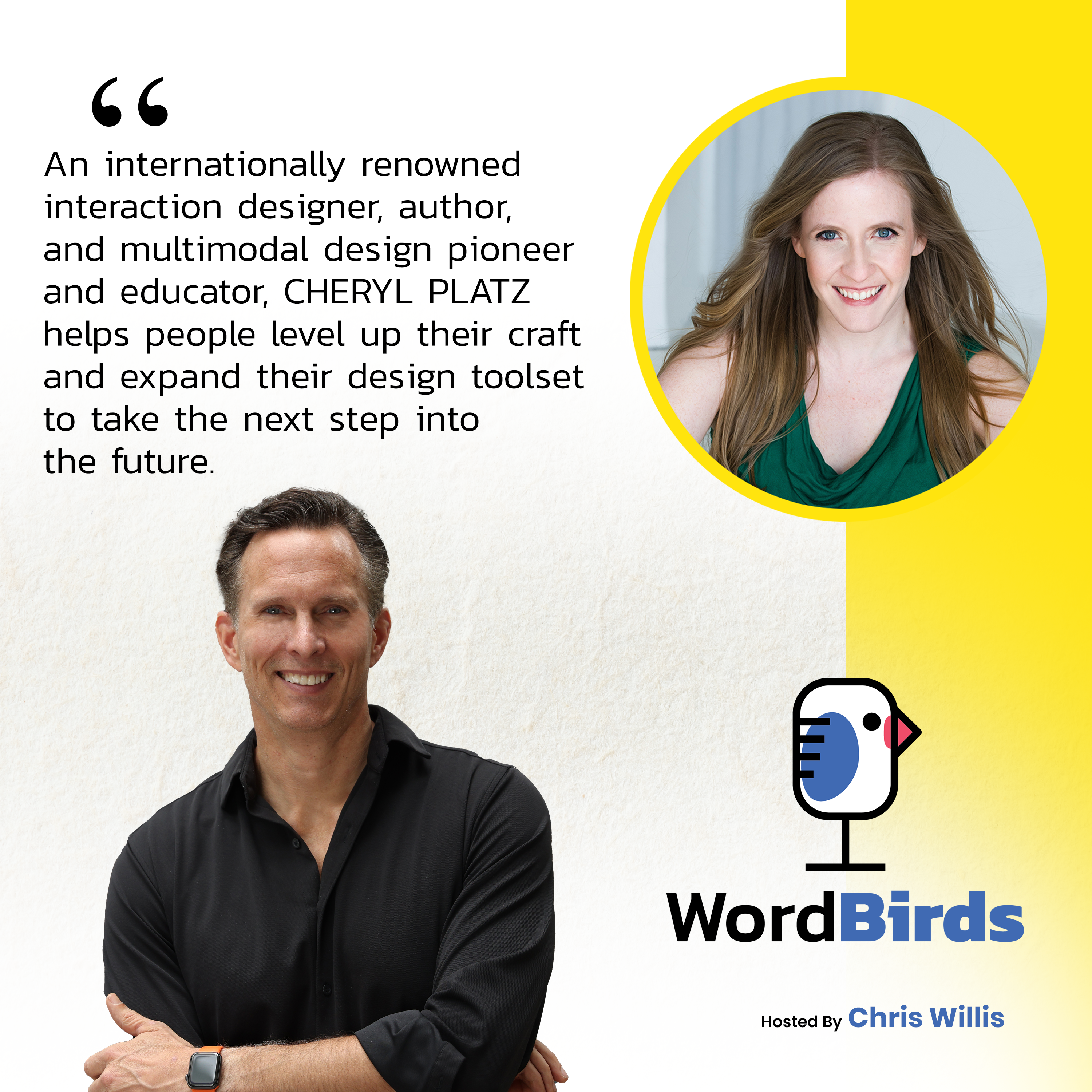
That cycle repeated itself over and over again because I moved to the handheld division in Maxsus and the Sims products, and handheld products were shipping on a 6 to 9-month cycle. When you’re shipping that fast, you can’t help but learn all of the things and learn them quickly. That prepared me to be an asset to any project I encountered later. “I can handle that. I shipped a launch title for the Nintendo DS. We didn’t even have two screens until a few months before we shipped. I’m cool. I could handle this strange thing.”
It’s the whole, “When I started developing this, there was no Nintendo DS, and now we’re running on Nintendo DS.” I was in Mobile at about the same time that you’re talking about. We were building applications for PalmPilots before there was a Blackberry, and then evolved into Blackberry and then into iPhone, and then into Android. You’re creating something that, in 2004, has one particular ideal and form factor that I didn’t even know was coming. You have to develop for it. It changes the way that you look at software development.
New folks come into the discipline, a new tool shows up, and folks get stressed. None of us knew about voice design before it became big. We all learned on the job. Just because you didn’t learn it in school doesn’t mean it’s not going to be learnable.
You didn’t take Writing for Alexa in college?
I did not. It’s weird. However, I did in grad school. There was one formative game for me, and it was called Hey You, Pikachu! It was not meant for college students. It was meant for middle school students or elementary school students. It had a microphone, and this was in 1999 or 2000, and you could talk to Pikachu. I was so struck. At the time, I was enamored with this character. I didn’t know why so much. It was so emotional for me to talk to Pikachu. It struck me, but rationally, I knew that it didn’t make sense that it was so emotional for me to talk to Pikachu, but I could. I played the heck out of that game, being able to have that emotional connection.
Later on, when I was in the games industry, Disney came to us and was like, “We would like a project where we’re working with RIP, Stitch, Winnie the Pooh, etc., and you’re building relationships. Can you work with us?” I’m like, “Yes. If you want emotional connections, we should use the voice capabilities of the Nintendo DS because that’ll help us drive that emotional connection between players.” I took the inspiration from Hey You, Pikachu! and then yanked it back into my career decades later after writing a grad school paper on the hero’s journey of Pikachu and Hey You, Pikachu!
You can implement voice capabilities if you want emotional connections with the characters in a video game. It helps drive that emotional connection between the players and the game. Click To TweetOn the one hand, you were the specific person that they needed. You were the one adult that was playing the Hey You, Pikachu! game and then turned that into the entire approach for Disney gaming. It’s remarkable to think about moving into a new space. It’s not finding out that, “I got the job, and I’m going to be writing for a voice assistant.” There’s no such thing. It is a white piece of paper.
How do you even start with the creation of an unknown conversation? I know there are guardrails, and there’s only so far that you can go in your interaction with a game like that, but it’s still a lot more white space than when you’re building for an onscreen experience that you’re going to drive. Coming from a conversation, “Good morning,” what do you say back? How do you even start with that blank piece of paper to define where this experience you can’t see is going to go?
It’s a good question. What was interesting was that on Disney Friends, which was released around 2008, we weren’t quite in the era of natural language. The voice interaction was a little bit more basic than what you and I are familiar with, where we had sentences going back and forth. What we had to do was develop a grammar, which was a dictionary of words and phrases that was specific that you could say to the game and get responses back from the characters.
I learned so much from that process because it requires so much more premeditated thought in the choice of those words. The way that voice recognition engines work, if you have a list of 20 words and all of them start with S, the engine’s going to perform poorly because they all sound similar. You can’t choose them for meaning. You have to choose them for acoustic uniqueness. We had the gameplay element. We had to choose the sounds for acoustic uniqueness, semantic validity, and also for emotional meaning in the context of the game. I love this story. I was the lead producer on this game, and I had this awesome lead engineer and lead artist.
I was walking past my lead engineer’s office, and he had the development Nintendo DS at his desk. I happened to walk by as he was doing a little test with Stitch. He leaned over and whispered, “I love you, Stitch.” I’m like, “Why is he whispering at it?” It doesn’t work because then he does it again, “I love you, Stitch,” and it still doesn’t work. He then just yells, “I love you, Stitch.”
Watching this adult person struggle with saying I love you to the game taught me a lot. Intellectually, we know that this is not a commitment. It shouldn’t be a thing. It’s hitting us at a different level. We added an alternate word for that particular interaction, like, “Friend.”
A common complaint that comes up is why can't we change the name of our Alexa device? It's that acoustic uniqueness thing. That’s part of the special sauce. You lose flexibility, but you get security. Click To TweetGender is a spectrum, but people who are raised with male standards might not be encouraged to say I love you out loud. What else could we give them to get the same reaction from Stitch after watching someone go through that? There was so much going into the choice of the content that you spoke about and what came back.
It’s remarkable to think about. The acoustic aspect of it is interesting too. Every evening, “Alexa, turn off blue room.” “I’m sorry, I can’t find living room.” I need to change the name of my room. I could avoid this conversation every night, but it is where I live. It’s how it works for me.
I don’t want to go too much into the technical stuff, but a common complaint that comes up is, “Why can’t I change the name of my Alexa device? Why can’t I give it an arbitrary name?” It’s that acoustic uniqueness thing. The part of the special sauce in a device like Alexa is that there’s local recognition and internet recognition. There’s the reason that it’s not as creepy a listening device.
When it’s listening, most of the time, it’s only capable of recognizing its own name. When it recognizes its own name, then it sends your stuff to the cloud. That requires specialized hardware with local algorithms for detecting a few keywords. If you had to broaden that to any possible word, you’d have to go to the internet to recognize your random name for Alexa. It would then be a bit more of a wiretap than something appropriate for a home. It’s tough. You lose flexibility, but you get security.
The same is true for devices when you only get to choose specific room names, and they’re not letting you pick stuff. They think they’re protecting you from yourself. They’re like, “We picked these. We’ve tested their acoustic uniqueness, and we think they’re going to work.” My experience has been that this is not always the case. They are not always the best set of words for different rooms, but often the intention is in the right place.
You’re the User Experience Lead for Player Platform at Riot Games. For people that know or that don’t, that’s the home of League of Legends, an iconic game in the gaming world. Tell me about your role there. There are expectations for the business to sound a certain way. You are not necessarily touching the game on a day-to-day basis, but the peripheral content probably has to play by the same rules as the user experience across the gaming platform.
To clarify, I’m the Director of User Experience for Player Platform, which is essentially things that are game-adjacent. We’re a smaller company than you would think for the number of gamers we impact, but we also have several divisions, groups, and things. We have our game teams. The Player Platform supports and embraces the games that keep everything going.
There’s also a publishing team that handles things like our website, our outreach to players, emails, and things like that. We’re in the middle of those two groups. In addition to my role as Director of User Experience for Player Platform, where I work with a team of about 14 designers, and within those, we have 2 content designers specifically. I’m also the lead for the UX Craft at Riot all up. I’m trying to help all the designers at Riot level up their craft, help us with recruiting, and all of that stuff.
It’s interesting where we reside in Player Platform because there’s more of a playful collegial tone when you’re a game company trying to reach out to your players, but in Player Platform, a lot of what we offer is things like authentication, account management, and the glue that keeps the game’s functioning. You want to provide that tone, but it’s in situations where there’s a heavy constraint and a much higher need to maintain trust and make sure people feel this is something that’s 100% professional, trustworthy, and will keep their data secure.
There’s a more playful collegial tone when you’re a game company trying to reach out to your players. Click To TweetWe have a few apps like Riot Client and Riot Mobile where we have a little more space to play, but even in those spaces, the content from our publishing teams about a specific event may be where there’s a ton of room to play. A lot of times, the content challenges for us and Player Platform revolve around taxonomy on how we’re referring to things.
We have the concept of a Riot ID, which is your player name that has two pieces, and then there’s a tagline that comes with a little hashtag. League of Legends has a different concept of a player name, which is summoner name. We and Player Platform have to figure out, “How do we refer to those things and content, so people don’t get confused? Which thing are we talking about, the summoner name, the Riot ID? How do we explain what a Riot ID is to people who are there for the first time? How do we explain what the tagline is, which is a part of the Riot ID? Is that the right taxonomy for these things? Do we want to drive feedback back into the architecture of things to make things less confusing?”
The Player Platform also supports all of our developers. There’s a huge content opportunity around how we make it easier for games in R&D to start onboarding. It’s funny, at the 10th anniversary of League of Legends, there was a big 10th anniversary moment where Riot took their big step. There’s a lot of joking around Riot Games, where we announced our foray into games beyond League of Legends.
The good news is that several of those successfully landed, and we have multiple games now, but we’re still improving how we keep that plural going, like the next game, and how we get that onboarded. As you can imagine, at any game studio, the second time you do a game, it’s still bespoke. It’s still a white glove. I’m like, “How do we do this the first time? What do we do now?” We’re at the point where we’re reflecting on, “We have to get better at doing this frequently. We have to be able to scale this.” When I started at Riot, we had only hired our first UX writer on the Player Platform team, which is also our first UX writer in Riot.
Noelani has been working with us on our Player Platform player-facing stuff. I brought on Tom, who’s going to be working with us on our developer side on developer-facing content for information architecture, taxonomy, consistency, and in some cases, service design, too, with relation to content. We have talented tech writers, and some of the work they do has an impact on UX. How do we partner with them to make sure that the pieces of their content that need to end up in microcopy on our pages end up there in the right way? How do we help them get to standardized document structures that show up well in our CMS? All of that good stuff.
The user experience isn’t in one place of the business. It’s across it. A lot of businesses miss that. I see that in the enterprise quite a bit. We’re creating content and marketing. We’re creating content and tech docs in support, service, and knowledge, and none of it is hierarchically governed. At the top of the hierarchy, we all spell the name of the company. We inherit down into the areas we inhabit and build for with these rules that flow down.
You don’t see that. You see segments of the company building content the way they want to and not handing it off. For you, that handoff has to be important because the software’s being built, and there are words in the software. Those words need to make it into the script. Those words need to make it into educational content, blog content, and peripheral content. There needs to be consistency across this experience.
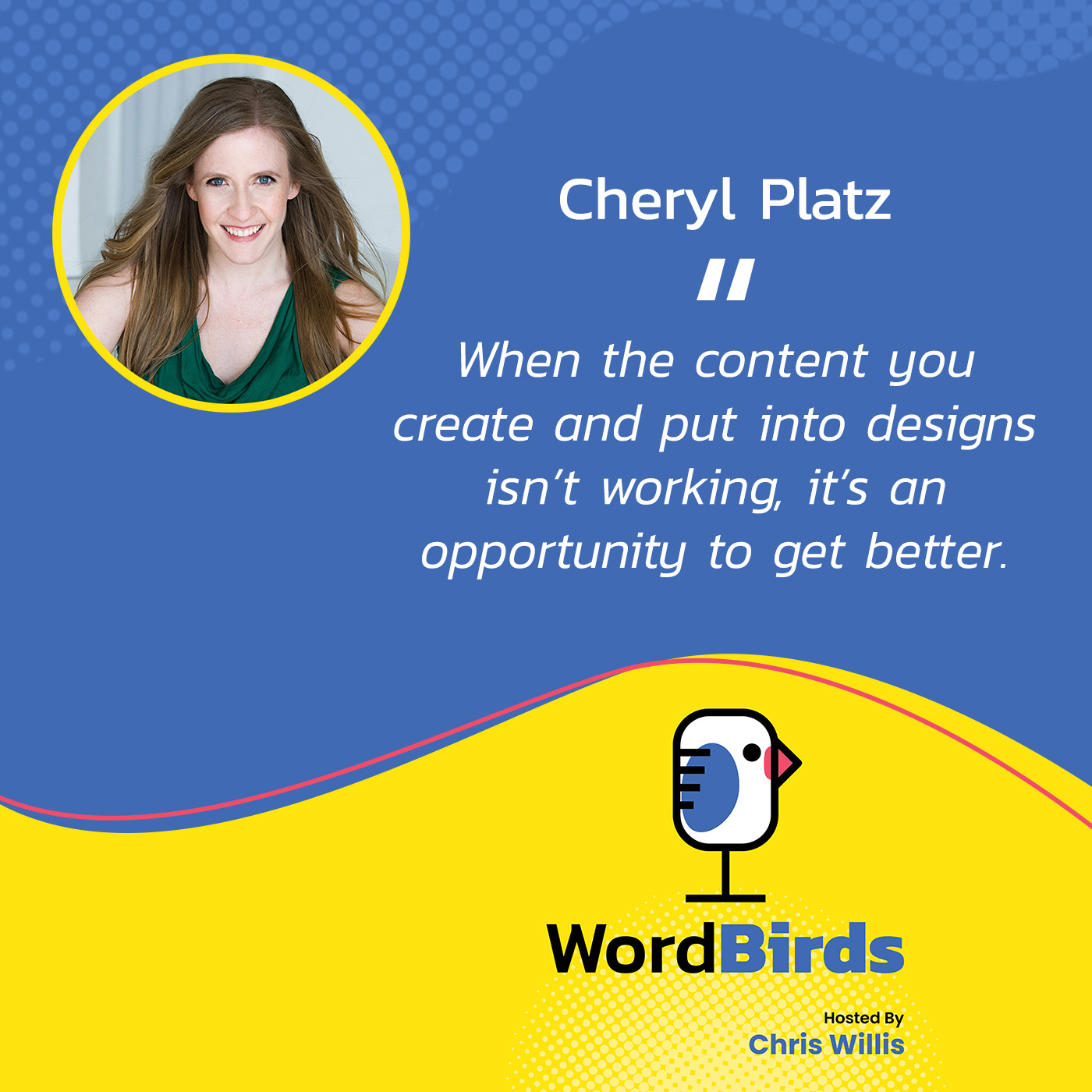
Here’s the question that I would have. When you go from game to game, do you need to re-craft any of the peripheral content to be the voice of the new game? If I’m coming in not for League of Legends but Valorant, am I seeing something more in line with the experience I’m expecting for that game than if I were coming for League of Legends?
I was not here when we did that big switch. At that time, the company did go through a big shift in how all of the content was positioned so that it could become more game-agnostic and the game-specific stuff was closer to the game. We are moving towards giving games a game-specific place to shine and having more of a Riot voice. You can see that if you look back through all of our stuff. Now, we have a Riot blog and all of our presence everywhere.
When it comes to Player Platform-specific stuff, one place where this need to share has been interesting. As you may know, in June 2022, a deal was announced between Riot and Microsoft. Game Pass members will eventually have access to benefits on Riot’s platform. This is a new type of partnership for Riot. It brings a higher content standard. We have seen our teams dealing with it because it’s not just Player Platform content. We have to deal with Microsoft’s brand standards and communication standards. We have to deal with legal content that needs approval.
We have to make sure that we’re being precise in describing benefits and what things are going to happen. We found, quickly working on that, that the previous systems we had on Player Platform to deal with how we wrote content and how we put it into designs weren’t working. We’re very much in a storming phase. We’re like, “This is an opportunity for us to get better.” You mentioned the top-down piece. We are not yet at that stage in our development, but we are at a stage where people are talking to each other.
It’s interesting, too, because game teams have their own universes. To a certain extent, games control their own destiny. It is at the Player Platform level and the publishing level. We have to talk to each other and be aligned. There are certain concepts the game teams need to align with when it comes to talking about certain aspects of the player account.
For us on Player Platform dealing with the scope of the Game Pass project, we have been figuring out how we track content at scale. How do we put a process around content so we can say, “This string is in the draft, requires Microsoft approval, brand approval, legal approval, assigned to the content writer, UX, and visual design for incorporation into the visuals.”
We’ve been experimenting with using Airtable for that because that tool was available to us, so we can use it in real-time. It’s a journey for us to figure out how we can collaborate at scale. If that pilot works, that gives us a path towards repeating it on other parts of our projects and maybe getting towards more of a centralized taxonomy that we could share with other teams and help that cross-company communication, but we are still in experimental mode.
It’s a challenge for any business. I have a customer that builds motorcycles. The idea is, much in the gaming industry, you end up hiring people who are fans of what you do. The motorcycle world has a specific vernacular and a lot of slang. This company doesn’t want that in their product manuals, for instance. The way they describe hooking up the battery on page 3 of the manual, page 47, page 372, and then on the website and in emails they send out, then marketing material all needs to be consistent.
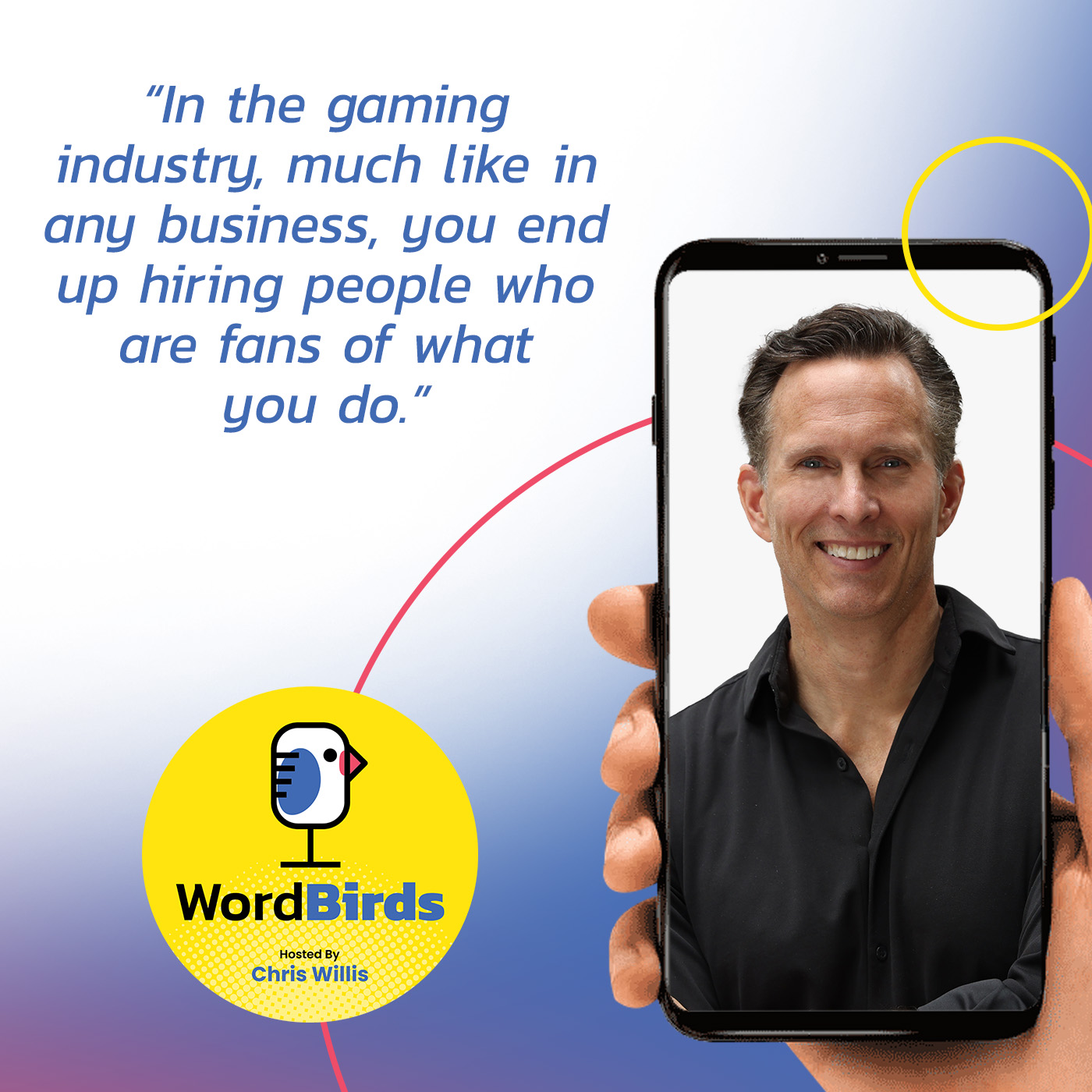
That’s an everyday battle because it’s not the same person writing it in every case. It’s not the same person taking that module or content and putting it into something. Everybody’s touching. How do you manage the clarity, consistency, and alignment of terminology across this huge lexicon of content? It hangs everybody up, and that’s something that great businesses continue to struggle with but are moving in directions in the right direction around.
It’s certainly not the first time I’ve been on a journey like this at a company. It’s always interesting because when you start, you’re like, “There must be a tool that does this.” They cost money, there are InfoSec explorations, and there’s vetting. The time it takes to get the tool that’s perfect for this and the time it takes for you to explore that, you accrue so much design debt in that time. Perfect is the enemy of progress in many cases. That’s where we are.
Sometime down the line, it is possible that the more formal CMS system might make sense for what we’re attempting to do here, but at the moment, we are heads down on some important time-sensitive work. How might we get better at how we partner on content at the moment without going through the formal, “Let’s do an RFP for a new software tool to track all of this. What do we have available to us? How do we MacGyver this at the moment to get better at what we’re doing?
You’re fascinating, and we could do this all day. If people reading this want to learn more from you and want to take more away from you, I can think of at least one spot, probably several, that they could go to get more information. One is your book, Design Beyond Devices. What are people going to take away from that high level?
Design Beyond Devices is a book about expanding our design toolset and taking the next step into the future. I tell folks that it’s the design manual for folks who want to build the bridge of the Starship Enterprise. If you think about Star Trek and the people interacting on that bridge, they’re seamlessly moving between interaction modalities.
They’re moving between physical internet interaction modalities. They may be flipping switches. They may be using touch screens. They’re talking to the computer. Sometimes they’re even using augmented reality. Similarly, they’re getting different inputs, sounds, haptics, and visuals. The show shows these things seamlessly working together. From experience, the more seamless it looks, the more intentional our work has been along the way to get that to work.
The fact that it’s seamless in times of stress, thumbs up to the hypothetical designers of the future that made that happen. This book is about how we take the next steps toward that future. Focusing just on mobile, on desktop, or Alexa prevents us from coordinating that vision and prevents us from being able to follow customers from their phones to our website to Alexa. It’s adding an extra layer of design awareness and design rigor on top of what we already have.
It doesn’t take away the need to have people who are specialists in a particular device. There’s some content about representing what we know and how our customers’ behavior manifests. We know how we can respectfully interact with and interrupt them at the moment because I know we’ve all been in a situation where we opened up an app on a desktop, and it was like, “I’m not ready for you right now.” You start typing an email, then it pops up in the middle of the email and pulls your focus away from the sentence. That’s rude.
The system should know that you’re active. It has all the data, but they never bothered to model what you were doing. It wants you to adapt to it at the moment. We talk about that. We talk about notifications, we talk about the different types of input and output, and how to coordinate across those things. We also talk about the ethics of inclusion and how to assess the impact of these systems. The larger and more robust these systems become, the more likely it is that they’re going to have a deeper impact on your customers.
It’s expansive, but it hopefully broadens the mindset a designer brings to open up new possibilities for following customers across the entire life cycle and all of their devices. I designed it to be fairly practical. There are frameworks you can apply, design systems, guidance, and things you can put into your work immediately. There are supporting resources on my website for folks that want to take it to the next level. That’s all available for free.
If somebody’s trying to get in touch with you to figure the next thing out and answer the question, I figure LinkedIn, maybe your website, what’s the best way to find you?
I am on many things. LinkedIn is a good way. I’m on LinkedIn. There’s Ideaplatz.com. My design education company is there. There’s a variety of materials there. That’s where the reference materials for my book are located. You can email me at Cheryl@Ideaplatz.com if you have specific questions. I am also on Twitter @FunnyGodmother. I have lots of different interests. That name is sitting in the middle of all of them.
Cheryl, thank you much for being on the show. Everybody’s going to get a lot out of this. Hopefully, we’ll get you back here sometime.
That would be great. Thank you so much for the chat, Chris.
Important Links
- Riot Games
- Design Beyond Devices
- LinkedIn – Cheryl Platz
- Ideaplatz.com
- Cheryl@Ideaplatz.com
- @FunnyGodmother – Twitter
- https://CherylPlatz.com
- WordBirds – LinkedIn
- WordBirds – Home page
About Cheryl Platz

Cheryl is best known for her work on cutting-edge products including Amazon’s Alexa, the Echo Look, Cortana, the Sims family of games, and Microsoft’s Azure platform. Her first book, Design Beyond Devices, was published by Rosenfeld Media in 2020. She is passionate about cross-device experiences and service design, multimodality, and taming complexity in all of its forms.
In her current role as Director of User Experience for the Player Platform at Riot Games (home of League of Legends and Arcane), I’m growing a team committed to providing a coherent cross-device experience for 100s of millions of players and also serve as the craft lead for all UX pros at Riot. She also owns the design education firm Ideaplatz, LLC through which I’ve delivered keynotes and workshops on 5 continents. In her free time, she’s a veteran improvisational actress and streamer who performed at Seattle’s Unexpected Productions for over thirteen years and has co-starred in multiple internet TV shows.
Past employers include Microsoft, Amazon, the Bill and Melinda Gates Foundation, Electronic Arts, Griptonite Games, MAYA Design, and Disney Parks. Learn more about Cheryl at https://cherylplatz.com
